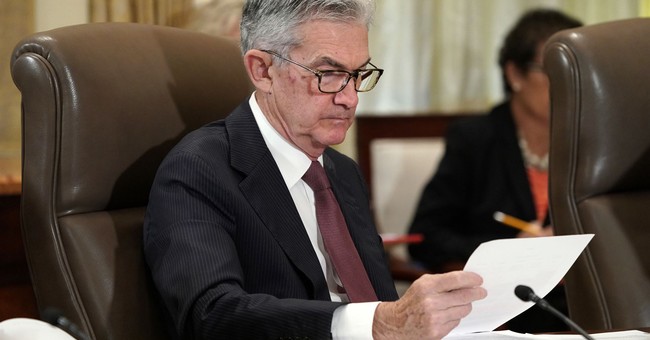
Source: AP Photo/Jacquelyn Martin
The stock market rocketed recently on news that the Federal Reserve may cut interest rates. People speculated that it may do so because of tanking economies in the rest of the world, President Trump’s trade wars, the slowing US economy, and other ideas.
Central banks have used the tools of interest rate changes and open market operations (buying and selling treasuries) for over a century in misguided efforts to boost their economies out of recessions. They get by with it because the process is complicated enough that most people don’t understand it. The general idea is to force feed the economy more money through the tube of the banking system.
If it reduces the Fed rate, then banks can borrow from each other or from the Fed at a lower cost and loan that money to customers at a lower interest rate. If the Fed engages in open market operations, it buys US treasuries from banks with “cash” and the banks can loan the new money to customers. New money usually goes into the stock market first and that’s the reason the market soared on speculation that the Fed may reduce its interest rate.
If the Fed lends money to banks or buys treasuries from them, it does so with changes to accounting entries. It doesn’t print currency; the Treasury Department does that. The Fed doesn’t have any money of its own. That’s why Fed “pump priming” is often described as creating money out of thin air. It’s no different in principle from counterfeiting.
Austrian economists have often complained of the Cantillon effects of such policies: the new money goes only to a small number of large banks first and then to their preferred customers, all of whom can buy assets, such as stocks, before prices rise. The rest of us suckers have to wait for the money to trickle down to us in the form of wages, after which assets like real estate and stocks are sky high. Mainstream economists put on blinders so they can’t see Cantillon effects and (I’m not kidding here) they pretend that the Fed drops the money from swarms of helicopters all over the country at the same time. If you don’t believe me, check any text book on monetary theory.
But if the Fed really wants to get money into the hands of as many people as possible and avoid Cantillon effects, there is a much easier way to do it: end the Fed’s monopoly on counterfeiting. Make counterfeiting legal for every citizen, say up to $10,000 per person. That way, anyone with access to a good color copier could create new money and spend it. After all, mainstream economists are convinced that the cause of recessions is a lack of spending cash for consumers.
My proposal overcomes another obstacle that the Fed created. Since the Fed pays members banks interest on reserves held at the Fed, most banks have allowed their reserves to balloon because the risk to reward of doing so is better than lending to customers. Fed attempts to create new money in the hands of consumers will only cause the excess reserves of banks held by the Fed to grow fatter instead of being loaned to businesses or consumers. The policy of paying interest on reserves is one reason the recovery from the Great Recession was so sluggish.
I doubt the Fed will consider my proposal even though it would be much more effective in achieving their stated goal – reviving the economy. That’s because the Fed has hidden goals. The Fed doesn’t exist to keep the economy running smoothly. It exists to bail out large banks that make too many bad loans. It stays in power by enriching the few large banks it gives new money to. In turn, those banks bribe politicians to keep the Fed and their money laundering scheme running.
No comments:
Post a Comment